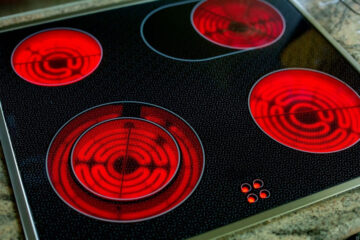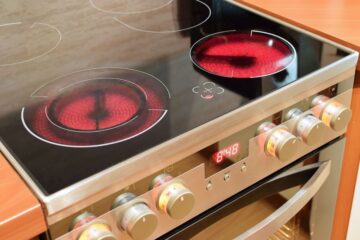Pellet stoves have become increasingly popular in recent years as a cost-effective and eco-friendly heating alternative. These stoves burn small, cylindrical pellets made from organic materials such as food or wood waste. One ton of pellets is equivalent to 1.5 cords of firewood, making them a more efficient and space-saving option for heating a home.
Compared to other heating methods, pellet stoves are cleaner, safer, and more environmentally friendly. They emit fewer pollutants and have a lower carbon footprint than traditional wood stoves. Additionally, pellet stoves are easy to operate and require less maintenance than wood stoves. In this article, we will explore what pellet stoves are, how they work, and the benefits of using them as a home heating method.
What Is a Pellet Stove?
Definition
A pellet stove is a type of stove that burns compressed biomass pellets made from organic materials such as sawdust, wood shavings, and agricultural waste. It is a modern heating appliance that provides warmth and comfort to homes and other living spaces. Pellet stoves are designed to be highly efficient and eco-friendly, as they produce fewer emissions than traditional wood-burning stoves.
How It Works?
Pellet stoves operate by using a hopper to store the pellets. The hopper feeds the pellets into a combustion chamber, where they are ignited by an electric igniter. The stove then uses a fan to circulate the hot air produced by the combustion process throughout the room. Pellet stoves are electronically controlled, which allows for precise temperature control and efficient burning.
Advantages
Pellet stoves offer several advantages over traditional wood-burning stoves. They are highly efficient, with most models boasting an efficiency rating of over 80%. They also produce fewer emissions than traditional wood-burning stoves, making them a more eco-friendly heating option. Pellet stoves are also easier to use and maintain than traditional wood-burning stoves, as they require less frequent cleaning and do not require a constant supply of firewood.
Disadvantages
While pellet stoves offer many advantages, they do have some drawbacks. Pellet stoves require a source of electricity to operate, which means they may not be suitable for use during power outages. They also require regular maintenance, including cleaning the hopper and ash pan, and replacing the igniter and other parts as needed. Additionally, pellet stoves can be more expensive to purchase and install than traditional wood-burning stoves.
Types of Pellet Stoves
Pellet stoves are available in different types that suit different heating needs. The most common types of pellet stoves include free-standing pellet stoves, pellet stove inserts, and pellet stove furnaces.
Free-Standing Pellet Stoves
Free-standing pellet stoves are self-contained heating appliances that can be placed anywhere in a room. They come in various sizes and designs, making them suitable for small or large spaces. These stoves have a hopper that holds a certain amount of pellets, which are fed into the combustion chamber as needed. They are vented through a flue pipe that runs through a wall or roof.
Free-standing pellet stoves are easy to install and can be used as a primary or supplemental heat source. They are also efficient and can heat a room or an entire house, depending on their size and heating capacity.
Pellet Stove Inserts
Pellet stove inserts are designed to be installed into an existing fireplace. They are an excellent option for homeowners who want to convert their wood-burning fireplace into a more efficient heating appliance. Pellet stove inserts are installed into the fireplace opening, and the flue is connected to the stove’s exhaust vent. They are easy to operate and can provide efficient heating for a room or an entire house.
Pellet stove inserts are available in different sizes and designs, making them suitable for various fireplace openings. They are also efficient and can heat a room or an entire house, depending on their size and heating capacity.
Pellet Stove Furnaces
Pellet stove furnaces are designed to be integrated into a home’s heating system. They are typically installed in a basement or utility room and connected to the home’s ductwork. Pellet stove furnaces are efficient and can provide heating for an entire house. They require a larger hopper and can hold more pellets than free-standing or insert stoves.
Pellet stove furnaces are suitable for homeowners who want to reduce their heating costs and use a renewable energy source. They are also environmentally friendly and produce less pollution than traditional heating systems.
Buying a Pellet Stove
When it comes to buying a pellet stove, there are a few important factors to consider. This section will cover the key points to keep in mind when selecting the right pellet stove for your home.
Factors to Consider
Before making a purchase, it’s important to consider the following factors:
- Size of the room: The size of the room you want to heat will determine the size of the pellet stove you need. A stove that is too small won’t heat the room effectively, while a stove that is too large will waste fuel and money.
- Budget: Pellet stoves can range in price from a few hundred to several thousand dollars. It’s important to set a budget and find a stove that fits within that budget.
- Fuel availability: Pellet stoves require pellets as fuel, so it’s important to ensure that pellets are readily available in your area.
- Brand reputation: Look for a reputable brand with a history of producing high-quality pellet stoves.
Sizing Your Pellet Stove
Choosing the right size pellet stove is crucial for efficient heating. A stove that is too small won’t heat the room effectively, while a stove that is too large will waste fuel and money.
To determine the appropriate size of stove for your room, consider the following:
- Room size: Measure the length, width, and height of the room to be heated.
- Insulation: The level of insulation in the room will affect the size of the stove you need.
- Climate: The climate in your area will also impact the size of stove needed. Colder climates will require a larger stove to effectively heat the room.
Installation and Maintenance
Installing a pellet stove requires professional installation to ensure safety and efficiency. It’s important to hire a certified professional to install the stove.
Maintenance is also crucial for the longevity and efficiency of the stove. Regular cleaning and maintenance will ensure that the stove operates safely and efficiently.
Conclusion
Pellet stoves are a great option for those looking for a more eco-friendly, affordable, and convenient heating source. They use a renewable biomass fuel called pellets, which are made of materials like wood chips and sawdust. Compared to oil and propane, pellet stoves are more eco-friendly and require less maintenance.
One of the benefits of pellet stoves is their use of a thermostat. When the thermostat is set, an auger screw turns and releases pellets into the firebox until there’s enough to bring the room up to temperature. Lowering the thermostat releases fewer pellets, while raising the thermostat releases more. Inside the stove are two fans that help distribute the heat throughout the room.
Pellet stoves are available as freestanding stoves or fireplace inserts, and can heat part or all of a home depending on the floor plan. They have a lower upfront cost compared to other heating options, but the cost of pellets can add up over time. However, they are still cheaper than electricity and natural gas in the long run.
Overall, pellet stoves are a worthwhile investment for those looking for an efficient and eco-friendly heating source. With correct maintenance, they can provide reliable heat for years to come.



